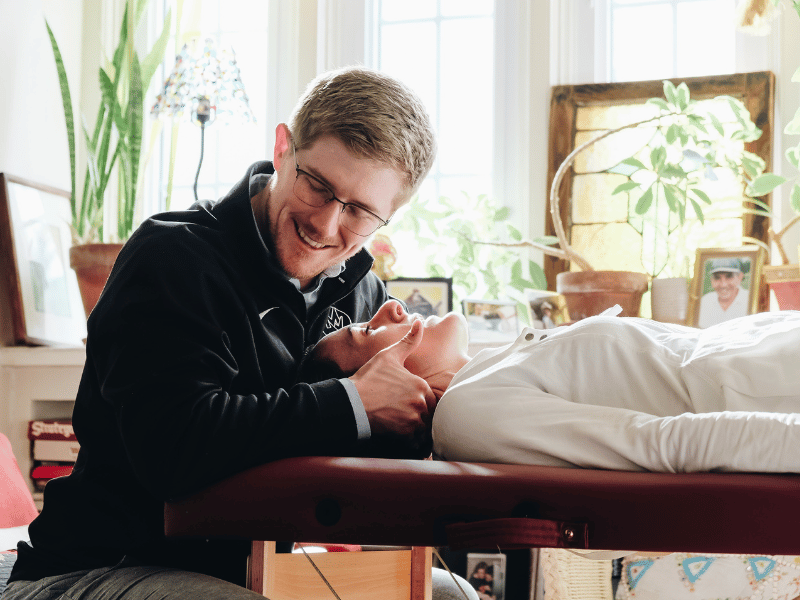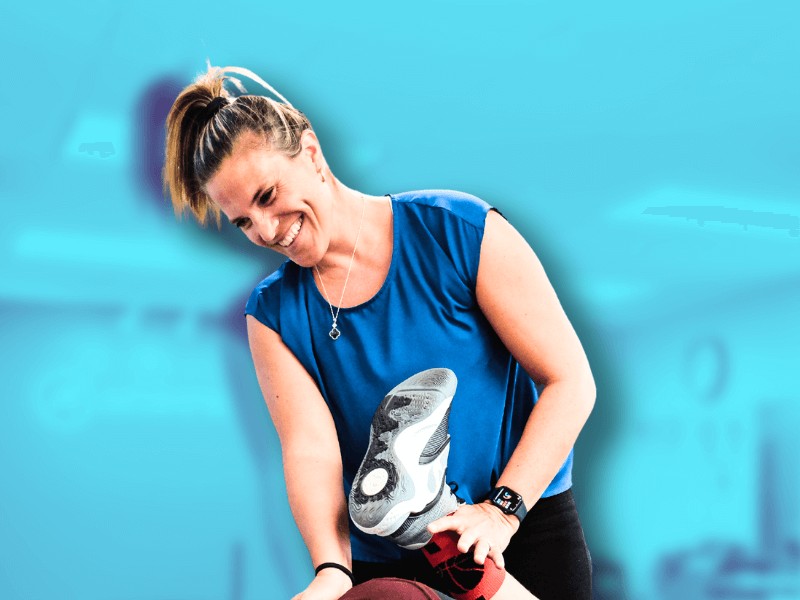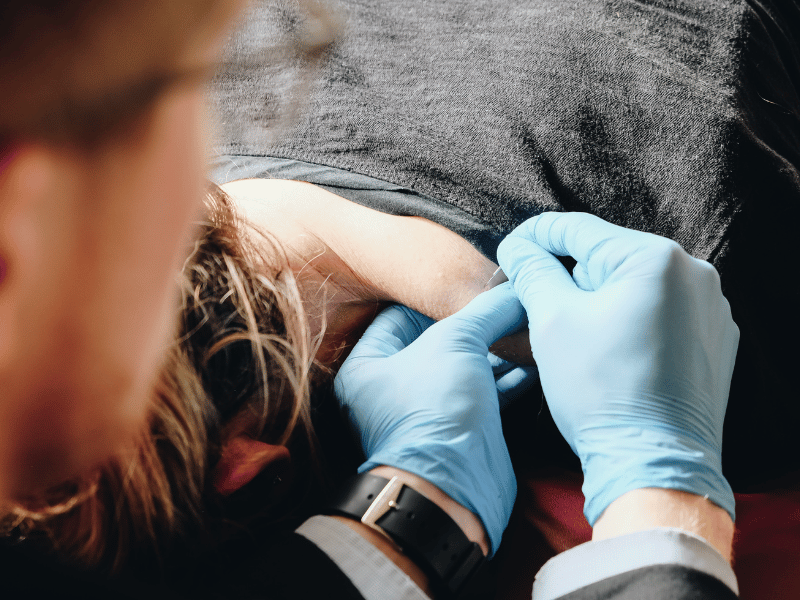Low Back Pain Treatment
Lower back pain is a prevalent issue, affecting a vast majority of individuals at some stage in their life. As a leading cause of disability globally, it significantly contributes to missed workdays and frequent medical consultations. Low back pain affects people of all ages, professions, and lifestyles, with estimates suggesting that up to 80% of the population will experience lower back pain at some point.
The severity of pain that people experience ranges from a mild, continuous ache to an acute, debilitating pain and can hinder daily activities and reduce quality of life. Its complexity is rooted in diverse causes, including muscle or ligament strains, disk issues, arthritis, and skeletal irregularities (we'll discuss these in depth below). Such variety in origins underscores the need for a holistic approach to treatment and management.
This page serves as a comprehensive resource for understanding and managing lower back pain. It offers evidence-based information on symptoms, causes, treatment options, at-home techniques, and preventative lifestyle changes. As you read on, you'll gain insights into effective therapeutic strategies and preventive measures. The guide aims to inform and empower readers, providing the tools and knowledge necessary for improved spinal health and a more comfortable life.
What is Lower Back Pain?
Our lower back bears much of the body's weight during standing, walking, and lifting, making it particularly susceptible to injury and strain over time or with improper movement mechanics. Lower back pain can range from a mild, persistent ache to an acute, debilitating condition that severely impacts daily functioning.
For many, low back pain is a major contributor to missed workdays and reduced productivity. In more severe cases, it can impede basic activities such as sitting, bending, lifting, or even walking, leading to a significant decrease in life satisfaction due to physical limitations. Chronic lower back pain, which persists for longer than 3 months, can also lead to emotional distress, including depression and anxiety, further diminishing overall well-being.
Lower back pain can be categorized by its duration: acute (lasting less than six weeks), subacute (six to twelve weeks), and chronic (more than twelve weeks). Pain may be localized to the lower back or radiate to adjacent areas, such as the buttocks or thighs. The nature of the pain can vary widely – it might be sharp and piercing, or dull and aching. It can arise suddenly due to an injury or develop gradually as a result of age-related changes or repetitive stress.
Understanding lower back pain involves not only recognizing its physical manifestations but also acknowledging its multifaceted impact on a person's life. The complexity of its causes and the broad spectrum of how it affects individuals underline the need for personalized treatment approaches and preventative strategies.
Low Back Pain Symptoms
Lower back pain manifests in various forms and intensities. Symptoms can vary greatly from person to person, influenced by factors such as the underlying cause of the pain, your physical condition, and lifestyle. Recognizing these symptoms is a crucial step in understanding and effectively managing lower back pain.
- Persistent Ache or Stiffness: Pain is often felt along the spine, from the base of the neck to the tailbone. It is typically a dull, constant pain that may worsen after prolonged sitting or standing.
- Sharp, Localized Pain: Usually concentrated in the lower back area, this type of pain can be intense and may feel like a stabbing or shooting sensation.
- Radiating Pain: Pain that extends from the lower back down to the buttocks, thighs, or even the calves. This type is often a sign of nerve irritation or damage, such as in sciatica.
- Muscle Spasms: Sudden, involuntary muscle contractions in the lower back can cause severe pain.
- Pain that Worsens After Prolonged Sitting: Sitting for extended periods can exacerbate lower back pain, particularly in individuals with poor posture or an unsupportive seating arrangement.
- Decreased Flexibility or Range of Motion: Difficulty in bending or twisting the torso is a common symptom, reflecting stiffness or tightness in the lower back muscles.
- Pain that Improves with Movement: Often, the pain may decrease with walking, stretching, or engaging in certain activities that promote mobility.
- Numbness or Tingling: This sensation can occur in the lower back, buttocks, legs, or feet and indicates possible nerve involvement.
- Weakness in the Legs or Feet: This can be a sign of nerve compression in the lower back and may affect your ability to walk or stand.
- Difficulty Standing Straight: In some cases, lower back pain can cause a noticeable lean to one side or an inability to stand up straight without pain.
Understanding these symptoms is vital in seeking an effective care solution. This list of symptoms aims to equip readers with the knowledge needed to identify early warning signs and take proactive steps towards managing their lower back pain.
Causes of Lower Back Pain
The complexity of lower back pain means that it can be the result of a combination of factors, including physical, lifestyle, and environmental factors. Here, we explore some of the most frequently identified causes and risk factors:
- Muscle or Ligament Strain: Repetitive heavy lifting or a sudden awkward movement can strain back muscles and spinal ligaments. The constant strain on the back can also come from maintaining a poor posture over time.
- Bulging or Ruptured Discs: Discs act as cushions between the bones in the spine. A disk's soft material can bulge or rupture and press on a nerve, causing pain.
- Arthritis: Osteoarthritis can lead to a narrowing of the space around the spinal cord, a condition known as spinal stenosis, which can also cause lower back pain.
- Skeletal Irregularities: Conditions like scoliosis, a curvature of the spine, can cause pain, especially if the spinal curve is severe.
- Osteoporosis: Bones becoming brittle and porous can lead to compression fractures in the vertebrae, causing significant pain.
- Age: Back pain tends to be more common as you get older due to changes in bone strength and muscle elasticity.
- Lack of Exercise: Weak, unused muscles in the back and abdomen might lead to back pain.
- Excess Weight: Excess body weight puts extra stress on the back, particularly the lower back.
- Diseases: Certain types of cancer and other diseases can sometimes cause lower back pain.
- Psychological Conditions: Stress, anxiety, and mood disorders can contribute to or exacerbate back pain.
- Improper Lifting Techniques: Using your back instead of your legs can lead to lower back pain.
- Sedentary Lifestyle: Prolonged periods of sitting can increase the likelihood of developing lower back pain.
Understanding these risk factors and their possible role in developing lower back pain is key to both prevention and treatment. While some factors are out of our direct control, others, such as exercise, weight management, and proper lifting techniques can be managed to minimize the risk of developing lower back pain. This knowledge empowers us to make informed choices about our lifestyle and activities to maintain a healthy back.
Treatment Options for Lower Back Pain
Treating lower back pain effectively often requires a multi-faceted approach, tailored to your specific condition and needs. The array of treatment options available ranges from self-care practices and over-the-counter remedies to professional medical interventions. Here is a detailed look at some of the best treatment options for lower back pain:
Medication
Over-the-counter pain relievers like ibuprofen or acetaminophen are often people's first line of treatment. In more severe cases, your physician may prescribe stronger medications for short-term use, but they should also recommend the next treatment option below.
Physical Therapy
Physical therapy is a cornerstone of back pain treatment. A physical therapist can teach you exercises to increase flexibility, strengthen your back and abdominal muscles, and improve posture.
Exercise
Regular exercise is crucial in the long-term management of lower back pain and can help improve strength and flexibility, reduce pain, and prevent future injuries. Core strengthening exercises, aerobic activities, stretching, and yoga can be particularly beneficial.
Heat and Ice Therapy
Applying heat and/or ice can offer relief for lower back pain. Ice packs are helpful in reducing inflammation and numbing the area to dull pain. Heat therapy promotes blood flow and helps muscles relax.
Cortisone Injections
In some cases where pain is caused by inflammation around the spinal nerves, cortisone injections may be administered to reduce swelling and alleviate pain.
Manual Manipulation
Physical therapists, chiropractors, and osteopathic physicians may use spinal manipulation to improve spinal function and alleviate stress on your system.
Lifestyle Modifications
Simple changes in daily life can have a significant impact on back pain. This includes adopting good posture, ensuring ergonomic work environments, quitting smoking, and managing stress.
Mind-Body Techniques
Techniques such as biofeedback, mindfulness, and cognitive behavioral therapy can help manage both pain and stress.
Surgery
Surgery is typically considered a last resort and is reserved for cases where there is structural damage that needs correction or when other treatments have failed. Common procedures include discectomy, laminectomy, or spinal fusion.
Alternative Therapies
Some people find relief through acupuncture, massage, or seeing an acupuncturist.
Each of these treatments offers different benefits depending on your specific case.
In the next section, let's delve deeper into the benefits of physical therapy, exploring how it plays a crucial role in both the treatment and prevention of lower back pain.
How Physical Therapy can help Lower Back Pain
Physical therapy plays a pivotal role in the management and treatment of lower back pain, offering a proactive approach that goes beyond just symptom relief. Working with a skilled physical therapist can lead to significant improvements in your pain levels, mobility, and overall quality of life. Here's an in-depth look at how physical therapy aids in combating lower back pain:
- Personalized Treatment Plans: One of the primary benefits of physical therapy is the development of a personalized treatment plan. Physical therapists assess individual patient needs, considering factors like pain severity, mobility issues, and lifestyle. Based on this assessment, they design a tailored program that targets the specific causes of the patient's back pain.
- Pain Management Techniques: Physical therapists employ various techniques to manage pain. These can include manual therapy, such as massage and mobilization, which help to alleviate muscle tension and improve joint mobility. They may also use modalities like heat therapy, ice packs, ultrasound, or TENS (Transcutaneous Electrical Nerve Stimulation) to reduce symptoms.
- Strengthening and Flexibility Exercises: Strengthening the muscles that support your spine and trunk is crucial. Physical therapists guide patients through targeted exercises that strengthen the core, back, and abdominal muscles. Additionally, they incorporate flexibility exercises and stretching to enhance muscle function and reduce the risk of further injury.
- Education on Body Mechanics: Educating patients on proper body mechanics is a vital component of physical therapy. Therapists teach correct posture, lifting techniques, and ergonomic principles for daily activities. This knowledge helps patients avoid movements that could aggravate back pain.
- Improving Function and Mobility: Physical therapy helps in improving overall function and mobility. Therapists work on balance, coordination, and posture, essential for reducing strain on the back and preventing pain.
- Active and Passive Treatments: Physical therapy combines both active treatments (where the patient participates, like exercise) and passive treatments (where the therapist assists, like manual therapy). This combination ensures a holistic approach to healing.
- Developing a Home Exercise Program: A critical aspect of physical therapy is empowering patients with exercises and techniques they can perform at home. This ongoing practice is key to long-term management of lower back pain.
- Preventive Advice: Besides treating existing back pain, physical therapists provide advice on preventing future episodes. This includes lifestyle modifications, workplace ergonomics, and regular exercise routines.
In essence, physical therapy for lower back pain is not just about treatment but also about equipping you with the tools and knowledge for long-term management. Through a combination of hands-on therapy, exercises, and education, physical therapists can guide you on a path to improved health and a decrease in the likelihood of recurrent back pain.
Our Top Exercises & Stretches for Lower Back Pain
Lower back pain can often be alleviated through specific exercises and stretches that target specific objectives. Here are five beneficial exercises and stretches, each with a step-by-step guide. Remember, while these exercises are generally safe and effective, it's important to consult with a MovementX physical therapist or healthcare provider before starting any new exercise program.
1. Pelvic Tilts
- Lie on your back with knees bent, feet flat on the floor, and arms by your sides.
- Flatten your back against the floor by gently contracting your abdominal muscles and tilting your pelvis upwards.
- Hold for 5-10 seconds, then relax.
- Repeat 10-15 times.
2. Knee-to-Chest Stretch
- Lie on your back with both knees bent and feet flat on the floor.
- Bring one knee towards your chest, using both hands to gently pull the knee.
- Hold the stretch for 20-30 seconds, feeling a comfortable stretch in the lower back.
- Return to the starting position and repeat with the other leg.
- Do 2-3 repetitions per leg.
3. Child's Pose
- Begin in a kneeling position on the floor.
- Sit back on your heels as you stretch your arms forward on the floor.
- Lower your forehead to the floor and relax your entire body.
- Hold this position for 20-30 seconds, focusing on relaxing the lower back.
- Return to the kneeling position.
Repeat 3-5 times.
4. Lower Back Rotational Stretch
- Lie on your back with knees bent and feet flat on the floor.
- Keeping your shoulders firmly on the floor, roll your bent knees to one side.
- Hold for 20-30 seconds, then return to the starting position.
- Repeat on the other side.
- Do 2-3 repetitions per side.
5. Cat-Cow Stretch
- Start on your hands and knees, with your wrists directly under your shoulders and knees under your hips.
- Inhale as you arch your spine downwards, lifting your head and tailbone towards the ceiling (Cow position).
- Exhale as you round your spine up, tucking your chin to your chest and drawing your abdominal muscles in (Cat position).
- Move slowly between these two positions for 1 minute.
These exercises and stretches can help release tension, improve flexibility, and strengthen your muscles around the lower back. Consistency is key for the best result, however, if any exercise causes pain or discomfort, stop immediately and consult with a professional.
Disclaimer: Always consult with a MovementX physical therapist or your healthcare provider before starting any new exercise program, especially if you have existing health concerns or conditions.
Prevention of Lower Back Pain
By implementing these strategies above, you can significantly lower your risk of developing lower back pain. It's about creating a balance between physical activity, ergonomic practices, and overall health maintenance to support your spine's health.
- Maintain Proper Posture: Good posture reduces stress on your lower back. When standing, keep your weight balanced on your feet, shoulders back, and your stomach pulled in. If you sit for long periods, choose a chair with good back support, and keep both your knees and hips level.
- Stay Active: Regular physical activity keeps the back muscles strong. Focus on exercises that improve core strength, flexibility, and overall health and fitness. Avoid prolonged inactivity or bed rest, as this can worsen back pain.
- Lift Properly: When lifting objects, bend at your knees, not your waist. Hold the object as close to your body as possible, and use your leg muscles in your hips to lift, not your back.
- Healthy Weight Management: Excess body weight, especially around the waist, can put excessive strain on your back muscles. Maintaining a healthy body weight through diet and exercise is beneficial.
- Quit Smoking: Smoking reduces blood flow to the lower spine, which can prevent your body from delivering enough nutrients to muscles and other tissues. Smoking also slows healing, so coughing due to heavy smoking can cause a back strain.
- Ergonomic Workstation: If you work at a desk, ensure your setup is ergonomically designed. This includes a chair with adequate lower back support, a desk at an appropriate height, and positioning your computer screen at eye level.
- Stress Management: Chronic stress can lead to muscle tension and exacerbate back pain. Techniques such as deep breathing, yoga, or meditation can help manage stress levels.
By implementing these strategies above, you can significantly lower your risk of developing lower back pain. It's about creating a balance between physical activity, ergonomic practices, and overall health maintenance to support your spine's health.
Conclusion
Are you taking the necessary steps to manage and prevent lower back pain effectively? How might your lifestyle, posture, or daily habits contribute to your spinal health? Remember, understanding and managing lower back pain is a journey, not a destination. It involves continuous learning, adapting, and proactive care. We encourage you to not only apply the insights and strategies discussed here but also to seek professional guidance for personalized care.
Consider requesting a session with MovementX to receive tailored advice and treatment. Our skilled physical therapists are ready to work with you, offering expert guidance, hands-on care, and customized exercise programs. We can help you navigate the complexities of lower back pain, ensuring you embark on a path to improved mobility, reduced pain, and enhanced quality of life.
Take the first step towards a pain-free life. Reach out to MovementX today and start your journey to better back health. Remember, your spine is the pillar of your body – it's never too late to start caring for it.
References
- Back pain – Symptoms and causes. Mayo Clinic. https://www.mayoclinic.org/diseases-conditions/back-pain/symptoms-causes/syc-20369906
- Delitto A, George SZ, Van Dillen L, et al. Low back pain: clinical practice guidelines linked to the international classification of functioning, disability, and health from the orthopaedic section of the american physical therapy association. J Orthop Sports Phys Ther. 2012;42(4):A1-A57. https://www.jospt.org/doi/pdf/10.2519/jospt.2012.42.4.A1
- Managing low back pain: exercise, manual therapy, and education. J Orthop Sports Phys Ther. 2021;51(11):535-535. https://www.jospt.org/doi/10.2519/jospt.2021.0508
-
About the Author
Dr. Julie Johnson is a physical therapist in the Fairfax, Virginia region. Among Julie’s specialties are Pediatrics (and Pediatric Athletes), Orthopedics, Running Analysis, Spine injuries (low back pain, surgical, McKenzie Method), Vertigo, and Post-Operative Care. Julie is also certified in Blood Flow Restriction therapy (Owens Recovery) and Sportsmetrics™. Beyond her practice, Julie loves activities from hiking, to sports, and also has a love for animals, coffee and warm weather.
Share This Page
More Conditions We Treat
Found this page interesting? Learn more about other conditions we treat:





